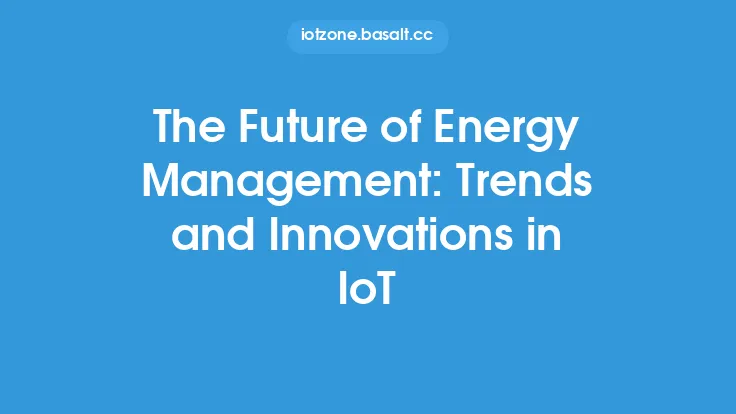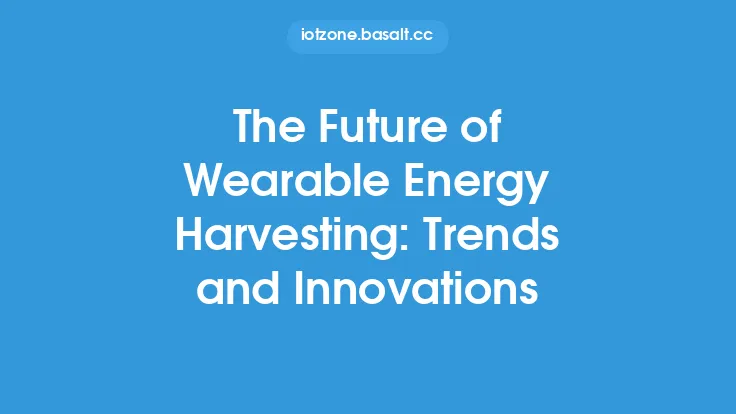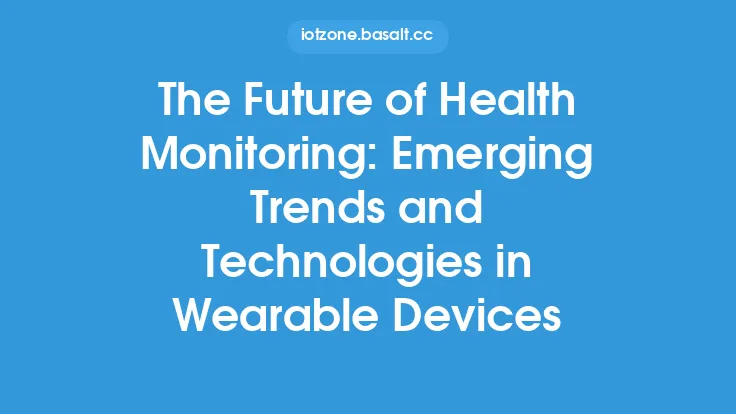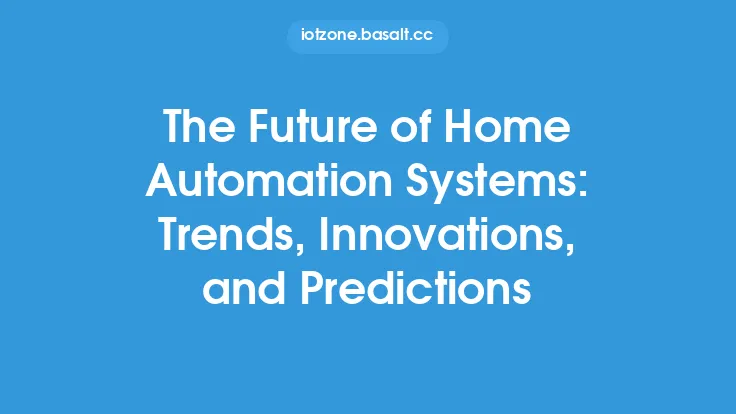The Internet of Things (IoT) has been rapidly evolving over the past decade, with an increasing number of devices becoming connected and able to collect, share, and analyze data. As the IoT continues to grow and expand into new areas, research and development (R&D) are playing a crucial role in shaping its future. In this article, we will explore the current trends and opportunities in IoT R&D, highlighting the key areas of focus and the potential impact on various industries and aspects of our lives.
Introduction to IoT R&D Trends
The IoT R&D landscape is characterized by several key trends, including the increasing use of artificial intelligence (AI) and machine learning (ML) algorithms to analyze and make decisions based on the vast amounts of data generated by IoT devices. Another significant trend is the growing importance of edge computing, which enables data processing and analysis to occur closer to the source, reducing latency and improving real-time decision-making. Additionally, the development of new communication protocols, such as 5G and LPWAN, is enabling faster, more reliable, and more efficient data transfer between devices.
Opportunities in IoT R&D
The opportunities in IoT R&D are vast and varied, with potential applications in numerous industries, including healthcare, transportation, manufacturing, and smart cities. One of the most significant areas of opportunity is in the development of IoT-enabled healthcare solutions, such as remote patient monitoring, telemedicine, and personalized medicine. Another area of focus is the creation of smart transportation systems, which can optimize traffic flow, reduce congestion, and improve safety. The use of IoT in manufacturing is also expected to increase, with the potential to improve efficiency, reduce costs, and enhance product quality.
Technical Advancements in IoT R&D
From a technical perspective, several advancements are driving the growth and development of the IoT. One of the most significant is the development of new microcontrollers and system-on-chip (SoC) designs, which are enabling the creation of smaller, more powerful, and more energy-efficient IoT devices. Another key area of advancement is in the development of new sensor technologies, such as MEMS and nanosensors, which are enabling the detection and measurement of a wide range of physical and environmental parameters. The use of blockchain technology is also being explored in IoT R&D, with the potential to improve security, transparency, and accountability in IoT systems.
IoT R&D in Academia and Industry
IoT R&D is being conducted in both academic and industrial settings, with a growing number of universities and research institutions establishing dedicated IoT research centers and programs. In industry, companies are investing heavily in IoT R&D, with a focus on developing new products, services, and business models that leverage the potential of the IoT. Collaboration between academia and industry is also on the rise, with partnerships and joint research initiatives becoming increasingly common. This collaboration is enabling the sharing of knowledge, expertise, and resources, and is helping to accelerate the development and deployment of IoT solutions.
Challenges and Limitations in IoT R&D
Despite the many opportunities and advancements in IoT R&D, there are also several challenges and limitations that must be addressed. One of the most significant is the issue of security, with the potential for IoT devices to be hacked and compromised posing a major risk to individuals, businesses, and societies. Another challenge is the need for standardization, with the lack of common protocols and standards hindering the development of interoperable IoT systems. The issue of data management and analytics is also a significant challenge, with the vast amounts of data generated by IoT devices requiring sophisticated analysis and interpretation.
Future Directions in IoT R&D
Looking to the future, several directions are likely to shape the trajectory of IoT R&D. One of the most significant is the increasing focus on human-centered design, with the need to create IoT solutions that are intuitive, user-friendly, and meet the needs of diverse users. Another area of focus is the development of more sustainable and environmentally-friendly IoT solutions, with the potential to reduce waste, conserve energy, and promote more efficient use of resources. The use of IoT in emerging areas, such as augmented and virtual reality, is also expected to grow, with the potential to create new and innovative applications and services.
Conclusion
In conclusion, the future of IoT R&D is exciting and rapidly evolving, with numerous trends, opportunities, and challenges shaping the landscape. As the IoT continues to grow and expand into new areas, it is likely to have a profound impact on various industries and aspects of our lives. By understanding the current state of IoT R&D and the future directions that are likely to shape its trajectory, we can better prepare for the opportunities and challenges that lie ahead, and work towards creating a more connected, efficient, and sustainable future for all.





